Key takeaways:
- Cover songs can transform emotional connections with music, allowing artists to express personal experiences and engage audiences in new ways.
- Learning cover songs enhances musicians’ technical skills, builds confidence, and fosters audience connection through familiar tunes.
- Choosing the right cover song involves personal connection, audience consideration, and awareness of one’s vocal strengths to ensure a resonant performance.
- Arranging cover songs creatively and incorporating storytelling into performances can elevate the experience, making it memorable for both artists and audiences.
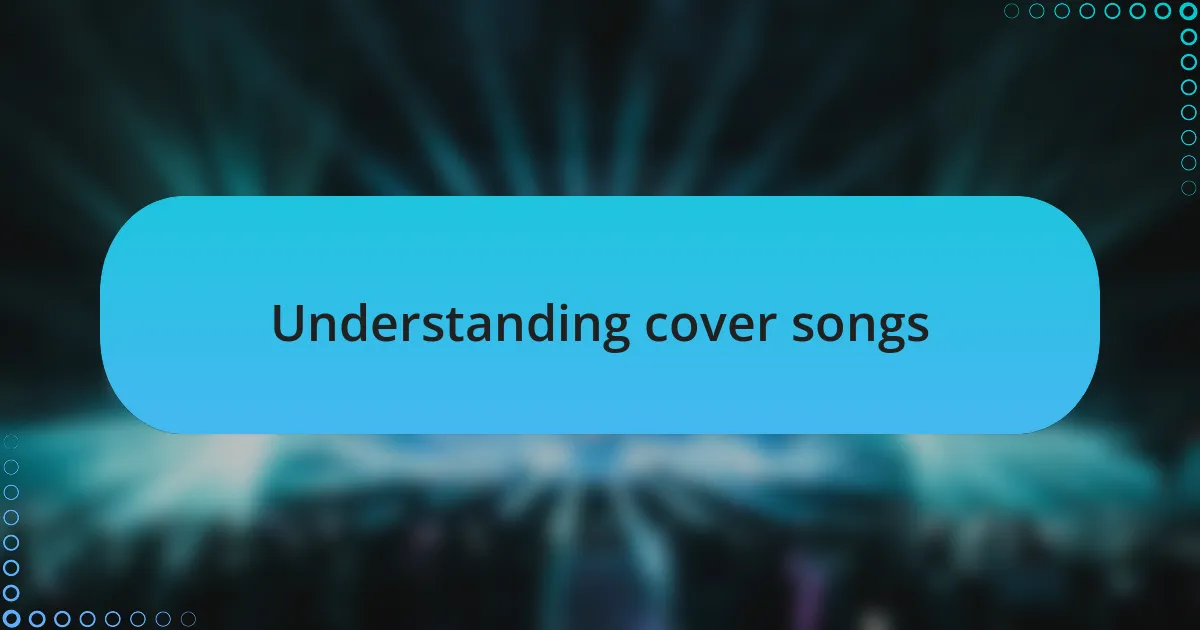
Understanding cover songs
Cover songs are fascinating because they breathe new life into existing music. I remember the first time I heard a cover that made me feel like I was encountering the song all over again—when Jeff Buckley performed his version of “Hallelujah.” It transformed the original for me, tapping into deeper emotions than I had felt before. Have you ever wondered how a different voice or perspective can change your connection to a song?
Understanding cover songs is also about recognizing the relationship between the original artist and the one interpreting the piece. Each cover can reflect personal experiences and artistic choices that differ from the original. I once attempted a cover of a Beatles song at an open mic, infusing it with my unique style. The feedback was incredible, demonstrating how a familiar song can resonate differently through a new lens.
Additionally, cover songs often serve as a bridge between generations. They introduce classic tracks to younger audiences, which can spark lively conversations about music history. I often find myself sharing great covers with friends who’ve never heard the originals, and it’s exciting to see their reactions. Isn’t it amazing how music can connect us across time and evoke shared feelings?
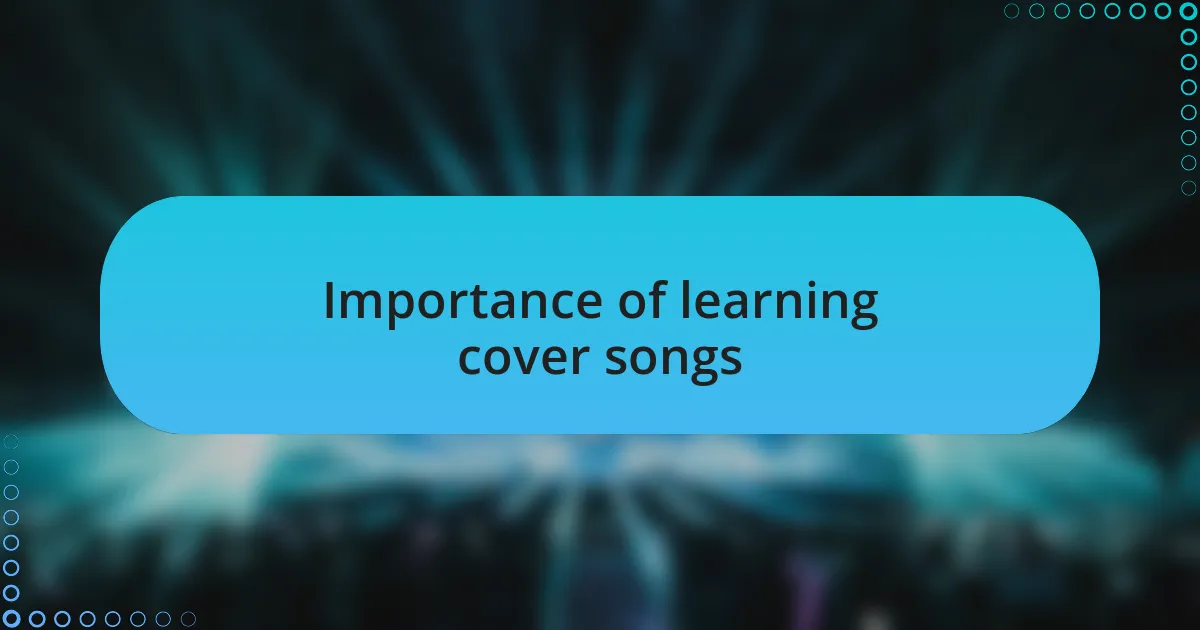
Importance of learning cover songs
Learning cover songs holds significant importance for musicians. It allows us to delve deep into the music we admire and truly analyze the nuances of composition and performance. I remember the thrill of learning a classic rock song on guitar; every chord felt like a lesson in musical storytelling. Have you ever thought about how mastering a cover can enhance your technical skills?
Moreover, covering a song creates an opportunity to connect with an audience in a special way. I once performed a Taylor Swift cover at a local café, and the response was immediate—a shared moment as people sang along. It reminded me that familiar tunes have a unique power to bring joy and collective experiences. Don’t you find it rewarding when your music can evoke shared memories?
Lastly, learning covers is a fantastic way to build your repertoire and gain confidence. When I entered a band, we primarily performed covers initially. This helped us gel as a group, understand our styles, and develop our sound. Isn’t it interesting how playing someone else’s song can pave the way for creating your original music?
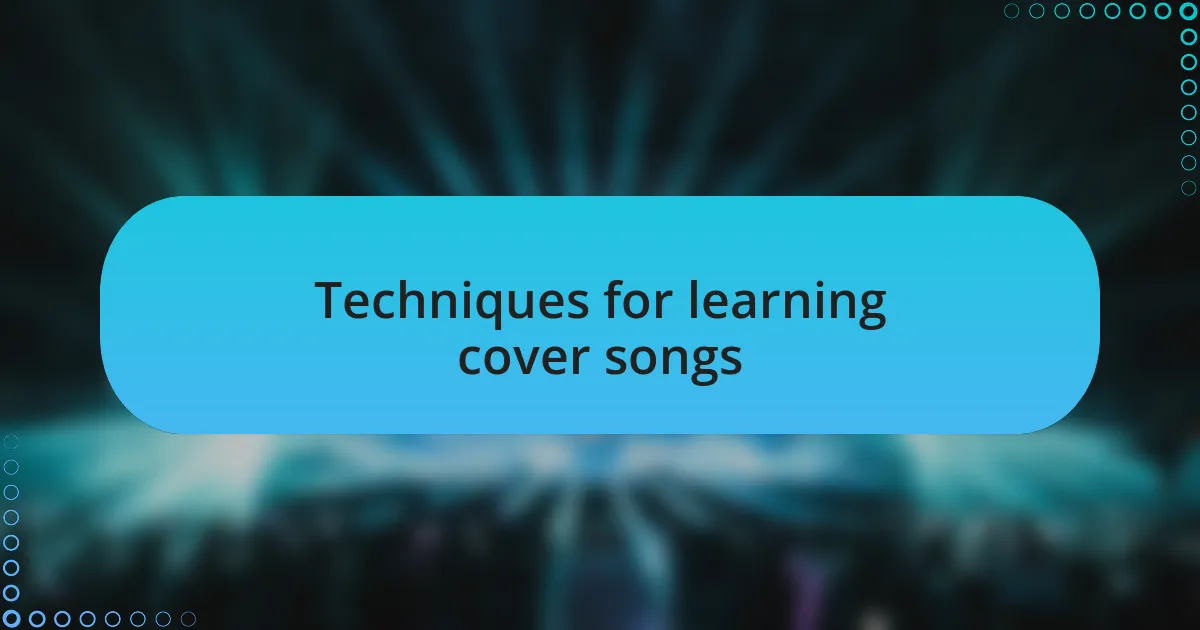
Techniques for learning cover songs
When I approach learning a cover song, I start with breaking down the structure. I focus on the chords, melody, and lyrics separately. I often find that understanding the framework of the song gives me a clearer path to putting my own spin on it. Have you ever dissected a song note by note? It’s fascinating to see how the pieces come together.
A technique I swear by is recording myself while practicing. There’s something about hearing your own interpretation that highlights both strengths and areas needing improvement. One time, I recorded my take on a blues standard and was surprised to hear the nuances I missed while just playing live. Listening back was like having a mini-concert for my own ears—what a different perspective!
I also love experimenting with different tempos or arrangements. When I decided to slow down a pop hit into a ballad, it transformed the whole piece and allowed for an emotional connection I hadn’t anticipated. It truly raised the question: how can simply altering the speed of a song change its impact on you and your audience?
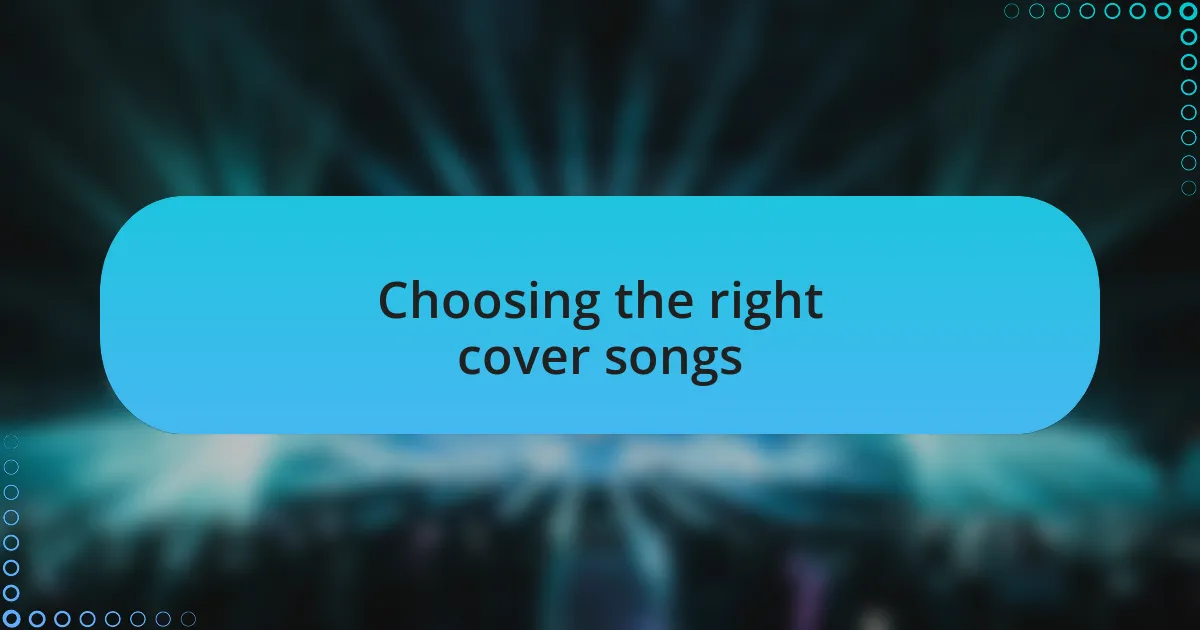
Choosing the right cover songs
Choosing the right cover song can greatly influence how well it resonates with both you and your audience. I often start by thinking about which songs have a personal connection for me. For instance, when I chose to cover a lesser-known indie track that I loved, it not only felt authentic but also allowed me to introduce something fresh to my listeners. Have you ever thought about why certain songs evoke strong emotions? That connection makes all the difference.
Another important aspect is to consider the crowd you’ll be performing for. I remember playing at a local venue filled with a diverse group of music lovers. I went with a classic favorite that everyone could sing along to, and the energy in the room was electric. It made me realize that picking a song everyone knows can create an incredible bonding experience. Do you have a go-to song that always gets people moving?
Lastly, I think about my own vocal range and ability when selecting a cover. I once tried to tackle a powerful rock anthem that was just outside my comfort zone. While I had a blast practicing, the performance felt forced, and it didn’t resonate like I wanted it to. Finding a cover that showcases my strengths while still challenging me is the sweet spot. How do you balance those elements in your song choices?
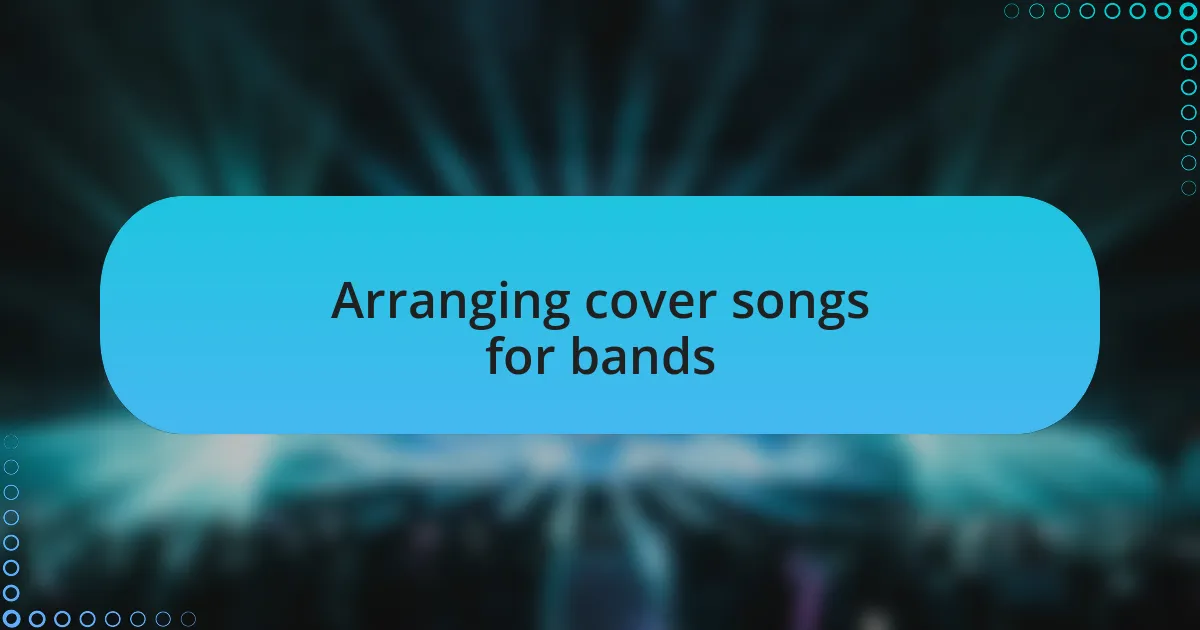
Arranging cover songs for bands
Arranging cover songs for your band can truly transform a familiar track into a unique experience. I’ve had moments where I decided to change the arrangement of a beloved ballad, adding a swing feel that completely shifted its vibe. The reaction was nothing short of magical—suddenly, people were dancing and singing along in a way I had never seen before. Have you tried reimagining a song in a different genre?
When it comes to instrumentation, I always think about how each musician in the band can contribute to the overall sound. For example, I once worked with a guitarist who brought a fresh perspective by adding intricate solos that enhanced the original melody. This not only kept things interesting for us but also gave the audience a deeper appreciation for the track. How do you feel about collaboration in arrangements?
It’s also vital to consider dynamics and transitions in the performance. One time, we played a cover where we slowed down the bridge, creating a moment of intimacy. You could feel the audience leaning in, completely mesmerized. Those small adjustments can elevate a cover song and make it resonate on a deeper level. What techniques do you utilize to keep your covers engaging?
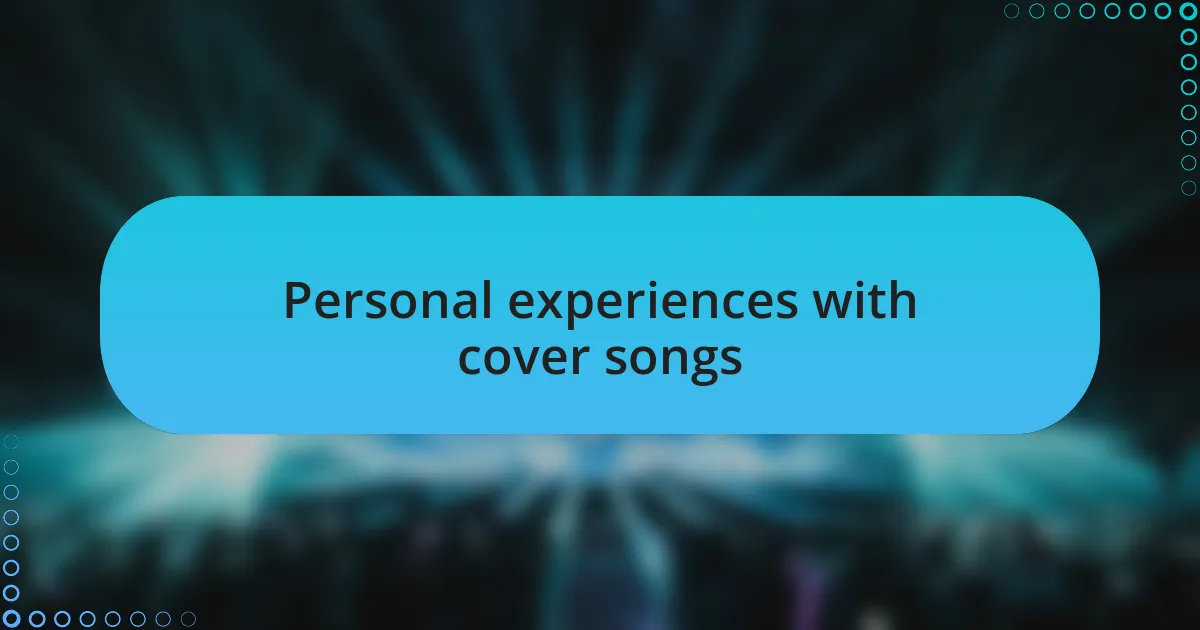
Personal experiences with cover songs
I remember my first attempt at covering a classic rock anthem. I was nervous, but something clicked when I decided to strip it down to just acoustic guitar and vocals. The audience’s response was overwhelming; I could see their faces light up with shared memories, and it reminded me how powerful a simple reinterpretation can be. Have you ever experienced a moment where a song brought an entire crowd together?
Another memorable experience was when I covered a pop hit with a totally different rhythm. While rehearsing, I felt apprehensive about veering too far from the original. But as we played, the infectious new groove made everyone smile and dance, transforming the song into something uniquely ours. Isn’t it fascinating how a different rhythm can breathe new life into a familiar melody?
Lastly, I’ve had the chance to perform a mashup of two songs that seemed worlds apart. While preparing, I felt like a chef experimenting with ingredients; it was both exhilarating and daunting. The way the two songs intertwined sparked a completely different energy in the room, leaving everyone buzzing long after the last chord. Have you ever fused two songs in a way that surprised you?
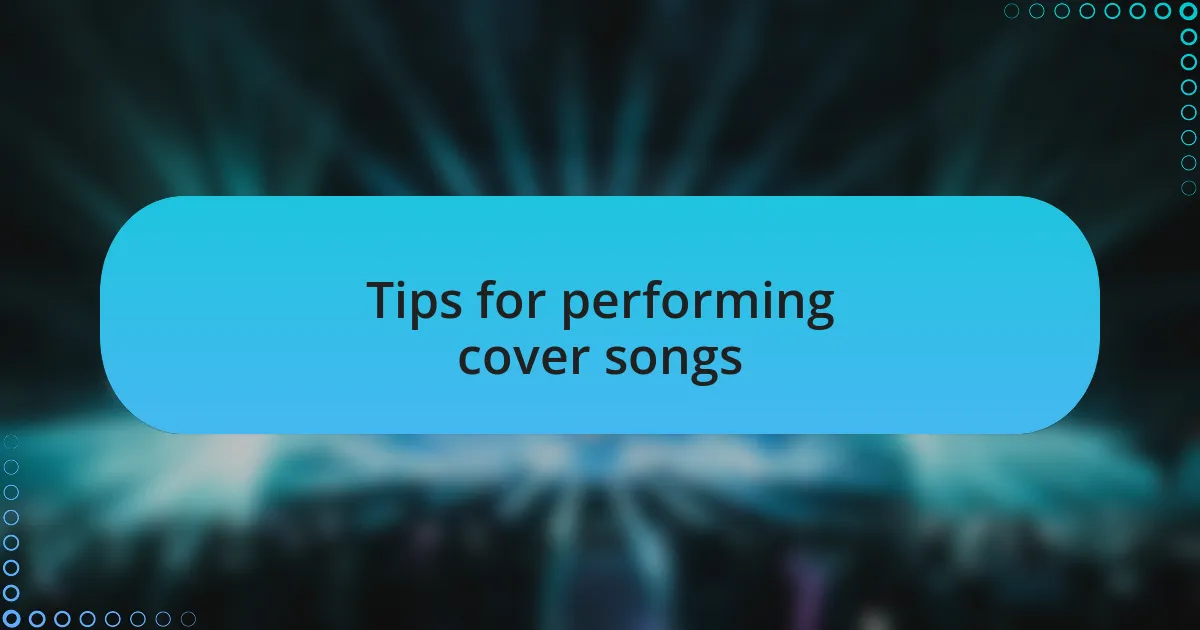
Tips for performing cover songs
When I prepare a cover song for performance, I always think about how to make it my own. One evening, I chose to add a unique instrumental intro that set a different mood before diving into the familiar lyrics. The audience immediately perked up, which made me realize that a simple twist can invite listeners into your interpretation of the song. Have you ever thought about how a small change could completely alter the atmosphere of a performance?
Another important tip is to connect with your audience through storytelling. During one gig, I shared a brief tale about what the song meant to me personally before playing it. I noticed how this made listeners more engaged; they weren’t just hearing a song—they were invited into my experience. How often have you felt more connected to a song because of the story behind it?
Finally, practice is essential, but I’ve learned that spontaneity can also enhance a performance. I remember a moment when I forgot a verse during a cover, but instead of panicking, I laughed it off and belted out a spontaneous ad-lib that had the crowd roaring. This taught me that embracing imperfections sometimes creates the most memorable moments on stage. What unexpected moments have you had that turned into something great?